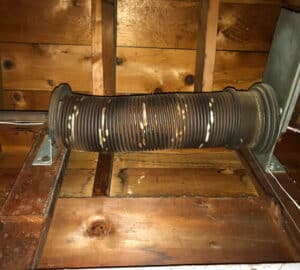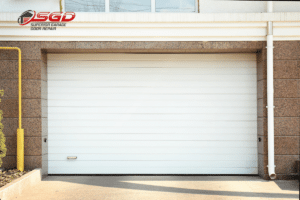When it comes to home exteriors, the garage door often plays a significant role in the overall aesthetics. One crucial element that contributes to its appearance is the trim surrounding it. Over time, weather conditions and wear can take a toll on this trim, leading to a need for replacement. In this guide, we will explore the process of replacing trim around a garage door, ensuring your home maintains its charm and curb appeal.
Signs of Damaged Trim
Before diving into the replacement process, it’s essential to identify signs of damaged trim. Cracks, peeling paint, rotting, warping, and even pest infestations are clear indicators that it’s time to consider a replacement. Additionally, water damage can compromise the integrity of the trim, making it crucial to address these issues promptly.
Materials Needed for Trim Replacement
Embarking on the project of replacing the trim around your garage door requires a well-planned selection of materials and tools. Here’s a comprehensive list of what you’ll need to ensure a successful and efficient replacement process:
-
Trim Material Choices:
- Wood: Traditional and versatile, wood offers a classic look. Popular choices include cedar, pine, and redwood, known for their durability and resistance to decay.
- Composite: These materials, such as PVC or fiber cement, offer increased durability and resistance to rot and pests. They’re ideal for harsh weather conditions and require less maintenance than wood.
- Metal: Aluminum or steel trims can be used for a modern look and are highly durable. They’re especially suitable for contemporary home designs.
-
Measuring and Cutting Tools:
- Tape Measure: Essential for accurate measurement of the space around your garage door.
- Saw: A handsaw or power saw (like a miter saw) for cutting the trim to the required lengths. The type of saw may vary based on the trim material.
- Level: To ensure the trim is perfectly horizontal or vertical when installed.
-
Installation Tools and Materials:
- Hammer or Nail Gun: For securing the trim with nails.
- Adhesive: Construction adhesive suitable for the trim material, used for a cleaner look without visible nail heads.
- Caulking Gun and Caulk: For sealing any gaps between the trim and the garage door frame.
-
Finishing Tools and Supplies:
- Sandpaper: For smoothing the trim edges and preparing the surface for painting or staining.
- Primer and Paint or Stain: Choose exterior-grade products compatible with your trim material. Primer is essential for raw wood trims.
- Paintbrushes or Rollers: For applying primer, paint, or stain.
-
Protective Gear:
- Safety Glasses: To protect your eyes from dust and debris.
- Gloves: To protect your hands during cutting and installation.
- Dust Mask: Especially important if sanding or working with potentially hazardous materials.
-
Cleanup Supplies:
- Rags or Cloths: For cleaning surfaces and wiping up spills.
- Trash Bags: For disposing of old trim and debris.
-
Miscellaneous Supplies:
- Pencil and Notepad: For noting measurements and planning cuts.
- Ladder: If the trim is above reachable height.
Preparation Steps for Installation
- Safety First: Before starting any work, prioritize your safety. Equip yourself with the appropriate safety gear. This includes wearing protective eyewear to shield your eyes from dust and debris, durable gloves to protect your hands, and a dust mask if you are sensitive to particulates. If you’ll be working on a ladder, ensure it’s stable and secure.
- Assembling Tools and Materials: Gather all the necessary tools and materials before beginning. This includes items like a pry bar, hammer, saw, measuring tape, level, and any replacement materials and fixatives you’ll be using. Having everything at hand will streamline the process.
- Removing the Old Trim: Approach the removal of the old trim with care to avoid damaging the surrounding area. Start by gently prying the trim away from the surface using a pry bar. If the trim is nailed, be careful to remove nails without causing further damage. If the trim doesn’t come off easily, check for any hidden fasteners or adhesive that may be holding it in place.
- Cleaning and Preparing the Surface: Once the old trim is removed, thoroughly clean the exposed surface. Remove any residual adhesive, nails, or other materials. Sand down any rough spots to create a smooth, even surface. This step is crucial for ensuring that the new trim adheres properly and sits flush against the garage door frame.
- Checking for Repairs Needed: Inspect the area around the garage door for any damage or wear that might need repair before installing the new trim. This could include filling holes, repairing small cracks, or addressing any water damage.
- Surface Treatment: If there are signs of mildew or mold, treat the area with a suitable cleaning solution to prevent future growth. For areas with existing water damage, consider applying a water-resistant sealant to protect the surface.
- Measuring the Area: Before purchasing or cutting new trim, measure the area around your garage door where the trim will be installed. Accurate measurements are essential for ensuring that you buy the right amount of material and cut the trim to the correct size.
- Planning the Layout: Once you have your measurements, plan the layout of the new trim. Consider any unique angles or corners around your garage door that may require special cuts. This planning step can save time and reduce the risk of mistakes during the installation process.
- Acclimating New Trim: If you’re using wood trim, it’s a good idea to let the wood acclimate to your garage’s environment for a day or two before installation. This helps prevent warping or other issues after installation due to changes in temperature and humidity.
- Setting Up a Work Area: Designate a work area where you can safely cut and paint the trim. Ensure this area is well-ventilated, especially if you’re using paint or adhesive. Lay down drop cloths or old newspapers to protect the floor from spills and sawdust.
Selecting the Right Trim
Choosing the right trim involves considering factors like weather resistance, architectural style, and budget constraints. The trim should complement both the garage door and the overall design of the home.
Measuring and Cutting
Accurate measurements are the key to a successful trim replacement. Take your time to measure precisely and use proper cutting techniques to ensure a perfect fit for the new trim.
Garage Door Trim Installation Process
The installation of new trim around your garage door is a crucial step that requires precision and attention to detail. Whether you opt for adhesive, nails, or a combination of both, the method you choose must ensure that the trim is not only aesthetically pleasing but also structurally sound. Here’s a more detailed look at the installation process:
- Choosing the Right Fixative: The first decision in the installation process is selecting an appropriate fixative. Adhesive provides a clean look without visible fasteners, ideal for certain types of trim and finishes. Nails, on the other hand, offer a more traditional method and can be more suitable for heavier trims. In some cases, a combination of both may provide the best results, especially in harsh weather conditions where extra durability is required.
- Surface Preparation: Before applying the trim, ensure the surface around your garage door is clean, dry, and smooth. Any old adhesive or material should be completely removed. This step is vital for ensuring a secure bond or proper nail grip.
- Applying Adhesive (if using): If using adhesive, apply it evenly on the back of the trim, avoiding excessive application that could cause oozing. For the best adhesion, press the trim firmly against the surface, starting from one end and moving to the other.
- Aligning the Trim: Carefully align the trim with the edges of the garage door, ensuring it is straight and level. Use a level tool for precision. Misalignment can not only detract from the appearance but also affect the trim’s functionality.
- Securing with Nails (if using): If you’re using nails, space them evenly and drive them in at a consistent depth. Be careful not to split the trim or damage the underlying surface. For a cleaner look, consider using a nail set to finish driving the nail slightly below the surface of the trim.
- Checking for Gaps and Alignment: Once the trim is in place, inspect for any gaps or misalignments. Small gaps can be filled with caulk, and any slight misalignments should be adjusted promptly before the adhesive sets or the trim becomes firmly anchored by the nails.
- Final Adjustments: Make any final adjustments to ensure the trim is securely attached and perfectly aligned. This step is crucial for achieving a professional and aesthetically pleasing result.
- Cleanup and Inspection: Remove any excess adhesive, if used, and clean up the work area. Conduct a final inspection of the trim to ensure it meets your expectations in terms of appearance and stability.
By following these detailed steps, you can ensure that the trim around your garage door is installed with the highest level of precision, resulting in an enhanced curb appeal and long-lasting durability.
Painting and Finishing Touches
After installing the trim, it’s time to enhance its appearance through painting. Prime the trim before selecting a paint color that complements your home. Don’t forget those finishing touches that elevate the overall look.
Garage Door Trim Maintenance Tips
Maintaining the trim around your garage door is essential for ensuring its longevity and preserving the aesthetic appeal of your home. Regular upkeep not only enhances the appearance but also prevents costly repairs in the future. Here are detailed maintenance tips to keep your garage door trim in top condition:
- Regular Inspections: Conduct periodic inspections of the trim, ideally every few months or at least twice a year. Look for signs of wear and tear such as cracks, chips, peeling paint, or signs of rot in wood trims. In the case of composite materials, check for warping or discoloration.
- Prompt Repairs: If you notice any damage during your inspections, address it immediately. Small cracks or holes can often be filled with wood filler or caulk. If there’s significant damage, such as extensive rot or warping, consider replacing the affected section of the trim.
- Cleaning Routine: Regular cleaning is crucial in maintaining the trim’s appearance and integrity. Gently wash the trim with a mild detergent and water using a soft brush or cloth. Avoid harsh chemicals or abrasive tools that could damage the paint or the trim material.
- Repainting and Sealing: If the paint on the trim starts to peel or fade, a fresh coat of paint can revitalize its look and add an extra layer of protection. Before painting, ensure the surface is clean, dry, and sanded if necessary. For wood trims, applying a sealant can provide additional protection from moisture and pests.
- Preventing Water Damage: Ensure that your garage’s guttering system is functioning correctly to prevent water from pooling around the trim. Regularly clean gutters and downspouts to avoid blockages that could lead to water damage.
- Checking for Pests: In areas prone to termites or other wood-boring insects, regularly check the trim for any signs of infestation. Early detection and treatment are key to preventing extensive damage.
- Weatherproofing: Consider applying weatherproofing products if you live in an area with extreme weather conditions. These products can help protect the trim from the effects of moisture, sun, and temperature fluctuations.
- Adjusting for Seasonal Changes: Wood trims can expand and contract with changes in temperature and humidity. Monitor the trim for any gaps that may develop and seal them to maintain insulation and prevent moisture ingress.
- Professional Assessment: If you’re unsure about the condition of your trim or how to address certain issues, don’t hesitate to consult a professional. Regular professional inspections can be particularly beneficial for older homes or in regions with harsh weather conditions.
Benefits of Upgraded Trim
Investing in upgraded trim offers multiple benefits. Enhanced curb appeal, increased property value, and protection against external elements are just a few advantages of maintaining quality garage door trim.
Common Mistakes to Avoid
Avoiding common mistakes, such as incorrect measurements or choosing the wrong type of trim, is crucial for a successful replacement project. Learn from others’ experiences to ensure a smooth process.
Cost Considerations
Consider your budget when selecting trim materials. While there are budget-friendly options, investing in quality materials can lead to long-term cost savings through durability and reduced maintenance
DIY vs. Professional Installation
Deciding between a DIY project and hiring professionals depends on various factors. Weigh the pros and cons of each approach, considering your skill level, available time, and the complexity of the project.
Superior Garage Door Repair: Your Trusted Partner
Discover the dependable solutions provided by Superior Garage Door Repair for effortlessly replacing trim surrounding your garage door. Understand the value of choosing professionals, guaranteeing both cost-effectiveness and the utilization of high-quality materials.
Conclusion
In conclusion, replacing trim around the garage door is a significant undertaking that pays off in terms of enhanced aesthetics and increased property value. By following our outlined steps and avoiding common mistakes, homeowners can achieve a professional-looking result that stands the test of time. Take pride in your home’s exterior, and invest in maintaining the details that make it uniquely yours.
Frequently Asked Questions
- How often should I inspect my garage door trim for damage?
- Regular inspections every six months are recommended to catch issues early.
- Can I paint the trim a different color than my garage door?
- Yes, choosing a complementary color can add visual interest and enhance curb appeal.
- Is it necessary to hire professionals for trim replacement, or can I do it myself?
- The decision depends on your comfort level with DIY projects and the complexity of the replacement.
- What is the average cost of replacing garage door trim?
- Costs vary based on materials chosen, but it’s generally a cost-effective home improvement project.
- Are there eco-friendly trim options available for garage doors?
- Yes, some trim materials are environmentally friendly, offering sustainable alternatives for homeowners.








